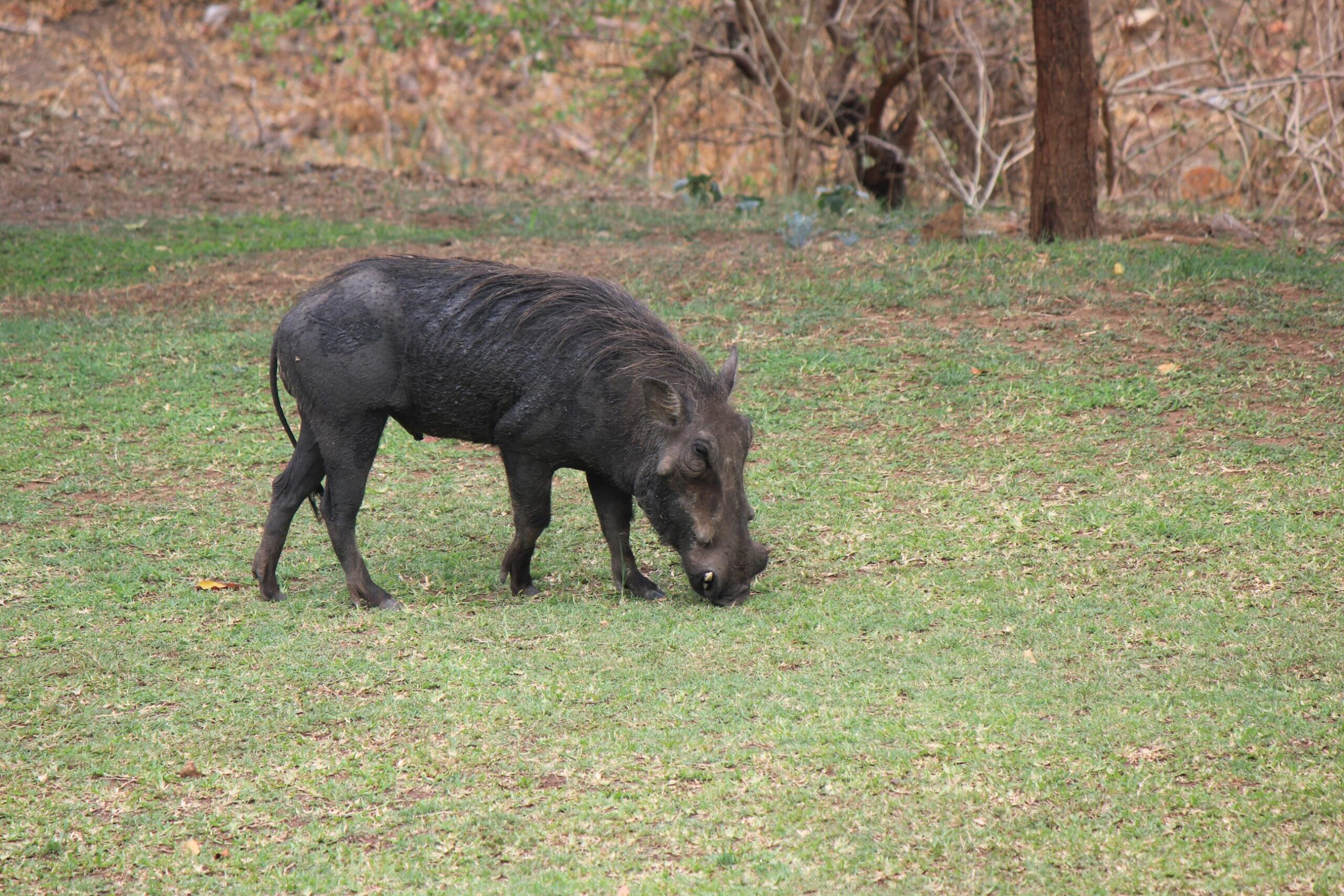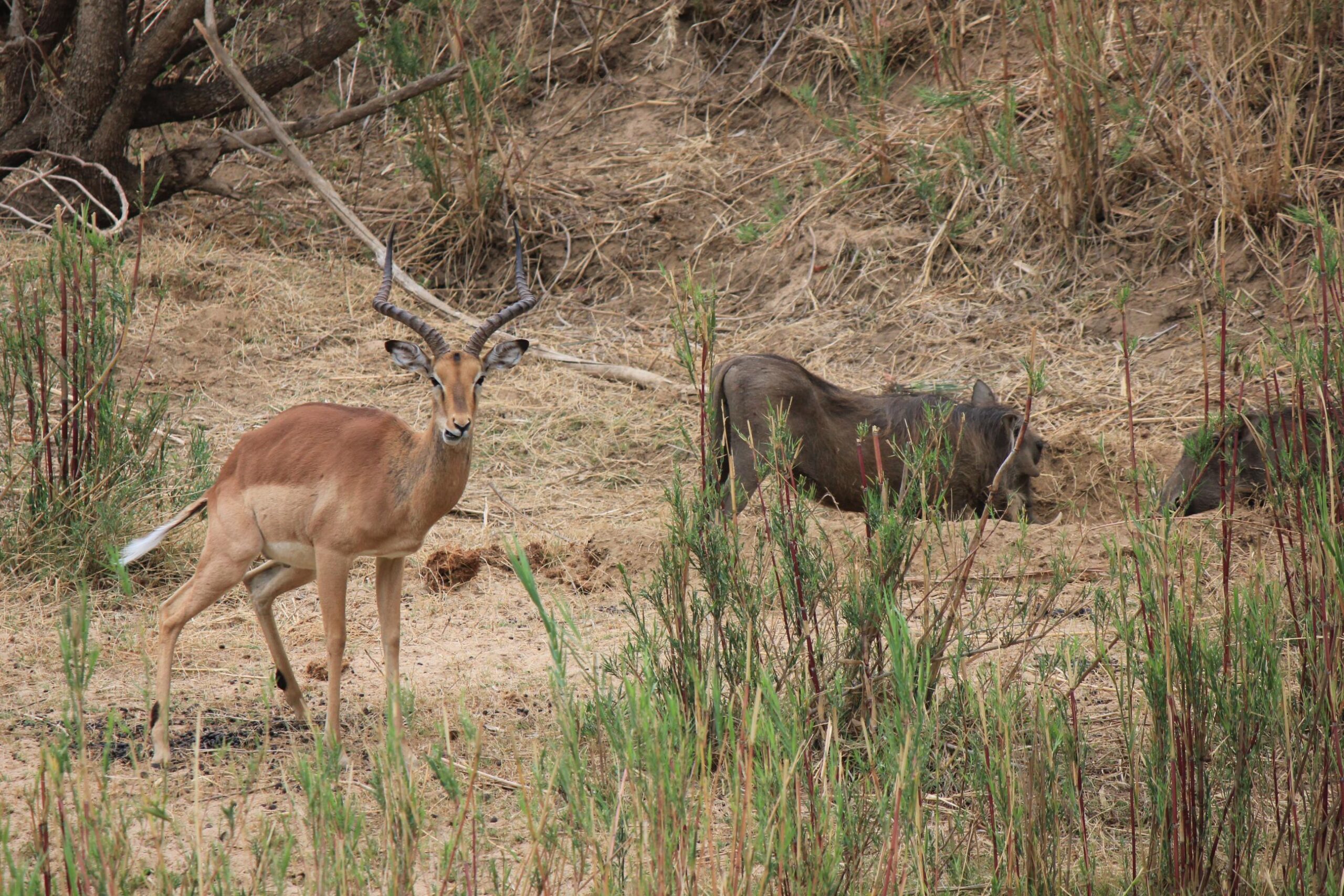
Remember Pumbaa, of Hakuna Matata fame (meaning “no worries” in Swahili), in the Lion King?
Well, Pumbaa is a warthog.
The warthog, an iconic creature of South Africa’s bush, may not win beauty contests, but it has captured the admiration of wildlife enthusiasts for its resilience and quirky habits.
Bowing to Eat
One of the most distinctive behaviors of warthogs is their habit of kneeling on their calloused wrists while feeding.
It was a big surprise to observe that!
This posture allows them to use their strong snouts to dig tubers and roots with ease.
It’s an energy-efficient way to graze while protecting their sensitive legs from wear and tear.

Thriving in Tough Times
Warthogs are masters of survival, capable of enduring South Africa’s harsh, arid conditions.
Their diet is highly adaptable, allowing them to thrive on tough vegetation during droughts.
In dire times, they even consume bark to sustain themselves.
Defenders with Warts and Tusks
Despite their name, the “warts” on a warthog’s face are not warts at all, but thickened skin pads.
These serve as natural armor during fights, especially among males fighting for dominance.
Their impressive sharp lower tusks and prominent upper tusks are not just for show.
They are dangerous weapons against predators, like lions and hyenas.
The warthog is part of the “Ugly 5” list, along with the hyena, the marabou stork, the vulture and the wildebeest (aka gnu).
Burrow Life: A Safe Haven
Warthogs are not great diggers, so they often repurpose the burrows of aardvarks.
These underground shelters provide a safe place to rest and escape predators.
Interestingly, warthogs back into their burrows, positioning their tusks outward for defense against intruders.
Quick on Their Feet
Despite their stocky appearance, warthogs are surprisingly agile.
They can reach speeds of up to 30 mph (48 km/h) when fleeing from danger.
As they run, their tails stand upright like little flags, possibly serving as visual signals to others in their group.
Social Creatures with a Maternal Touch
Female warthogs, known as sows, live in groups called sounders, along with their young.
These tight-knit groups are protective, often prioritizing the safety of piglets when faced with threats.
Young warthogs, full of energy, engage in playful activities like chasing and mock-fighting, which help them develop essential survival skills.
Mud Baths and Grooming Sessions
To combat the harsh sun and pesky parasites, warthogs indulge in frequent wallowing.
Rolling in mud not only cools them down, but also forms a protective layer on their skin.
They’ve also formed a symbiotic relationship with grooming birds like oxpeckers, which help keep their skin parasite-free.
The Challenges of Aging
Warthogs face unique challenges as they age.
Their diet of abrasive vegetation causes their molars to wear down over time.
When their teeth become too worn, feeding becomes difficult, and survival can be a struggle.
Clever and Resourceful
These animals have remarkable memory skills, recalling the locations of safe burrows and water sources.
This ability is vital for their survival, especially in the ever-changing landscape of South Africa’s wilderness.

Warthog foraging next to an impala
Symbols of Resilience
In African folklore, warthogs are often seen as symbols of resourcefulness and resilience.
Their ability to adapt to tough conditions and their tenacity in the face of challenges make them a creature worth admiring.
The warthog’s life is a testament to nature’s ingenuity.
From their kneeling grazing habits to their defensive tusks and burrow-dwelling lifestyle, they exemplify adaptability and perseverance.
Hakuna Matata…
We can’t help your warthog, but if you would like to learn how we can help your cat or your dog with safe surgery and anesthesia, please contact us through www.LRVSS.com
Never miss a blog by subscribing here: www.LRVSS.com/blog
Phil Zeltzman, DVM, DACVS, CVJ, Fear Free Certified
